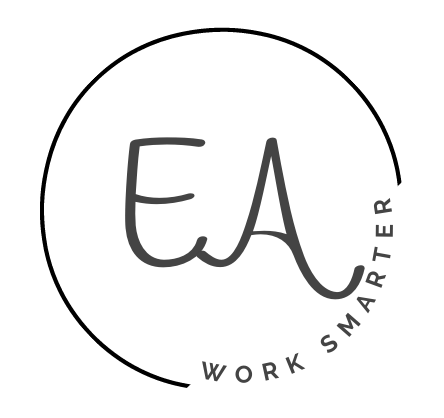It’s frustrating to have just finished a lesson and then see after a few moments a hand raised or a student walking towards you.
Then you hear the dreaded phrase, “I’m done! What do I do now?”
Well, those times are now a memory thanks to early finisher activities.
By using this list of engaging fast-finisher activities, your students will never again wonder what to do next.
No matter the grade level of your students or their ability levels, you’ll find an idea here to fit the needs of your class.
Your classroom management system just got a bit better and your stress level lowered.
Early Finisher Activities
1. Review Math Facts.
Have students practice their basic math facts (addition, subtraction, multiplication, or division) using flash cards.
Challenge them to answer a set number of facts in a certain amount of time.
Alternatively, allow students to practice their math facts using an online platform, multiplication timed worksheets, or with a multiplication machine.
2. Write a Poem.
Provide students with different examples of poetry. Then give them the tools they need to create their own poetry.
Because there are different forms of poetry (e.g. haiku, acrostic, etc.), this activity can be made as complex or as simple as you like depending on the ages and ability levels of your students.
3. Answer Reader Response Questions.
After reading a book, students answer 10-15 (or whatever number you choose) reader-response questions about their books in their reading journals.
4. Respond to a Writing Prompt.
Support students in honing their writing skills by giving them the task of responding to a variety of writing prompts.
Writing prompts are fantastic assignments to use as early finisher activities because they integrate well with every subject area and season.
5. Write a Letter to Your 100-Year-Old Self.
Encourage students to think forward by having them anticipate what their lives will be like at 100 years old.
Motivate them to stretch their imaginations by asking them to write a heart-felt or humorous letter to themselves as mature citizens.
Here are some questions to kickstart their brainstorming:
- What opinion will you have of the younger generation?
- For what will you be grateful?
- How will you feel about current events?
- With whom will you live?
- What will your daily life look like?
- Where are your spouse, children, relatives, and friends?
- How do you stay entertained?
6. Make a Quiz About a Current Topic.
Encourage students to review skills or strategies from a current unit of study by having them create a short test (along with an answer key).
The assessment may be true/false, essay-style, multiple choice, short answer, fill-in-the-blank, or a combination of several formats.
7. Choose an Activity from a Choice Board.
Choice boards serve as a way to offer students a menu of options in regard to what types of activities they would like to review.
Whether you want students to review math, language arts, science, or social studies concepts, choice boards will fit well.
They are flexible teaching resources that are easily customizable based on the needs of your class.
See early finisher choice board ideas.
8. Participate In a Math or Literacy Center.
Direct students to a math or literacy station to practice skills once they are done with class assignments.
You could even provide some of those done-at-your-desk centers that include everything students need in order to complete the task right inside a handy folder.
9. Solve a Sudoku Puzzle.
Solving puzzles improves memory, thinking skills, and concentration just to name a few of the many benefits.
This is why Sudoku puzzles make a wonderful addition to your collection of early finisher activities.
There are easy, medium, and hard categories which means that there is a puzzle to fit every ability level in your classroom.
10. Read Silently.
This early finisher activity requires nothing more than for students to choose a favorite book and find a cozy spot to read it.
Consider offering a special stash of books from different genres in order to build students’ interests.
11. Spell Vocabulary Words With Play-Doh.
If you want students to practice weekly spelling words or key vocabulary from a current unit of study, have them do so using Play-Doh.
This task enhances fine motor skills and also sparks a bit of creativity.
12. Complete a Book Report.
Book reports don’t have to be elaborate projects that require weeks and weeks of work.
They can be low-maintenance and still effective at boosting students’ reading skills.
Provide a variety of engaging book report templates.
13. Write a Letter to Next Year’s Class.
Your students are learning so much this school year, and I bet many would be happy to share their experiences with those who will be coming after them.
Have students draft a letter to those in the grade below, telling them what to expect next year.
14. Complete a Word Search.
Just about every student knows how to complete a word search; that’s why it’s one of the best early finisher ideas.
What’s more, it’s low-prep, engaging for students, and can be incorporated into any topic or subject area.
To add substance to this activity, require students to choose at least five of the terms to make five different sentences or to create a story.
15. Sketch a Scene From a Favorite Book.
This early finisher activity works best for younger students or learners who express themselves well visually.
Have students draw an important picture or two from a book they love. They will then caption the picture and/or write a summary of the scene.
Final Thoughts On Early Finisher Activities
This list of early-finisher ideas makes a great addition to your collection of teaching resources.
In addition to never hearing again, “I’m done! What do I do now?”, students’ learning will be maximized and interruptions greatly reduced.
